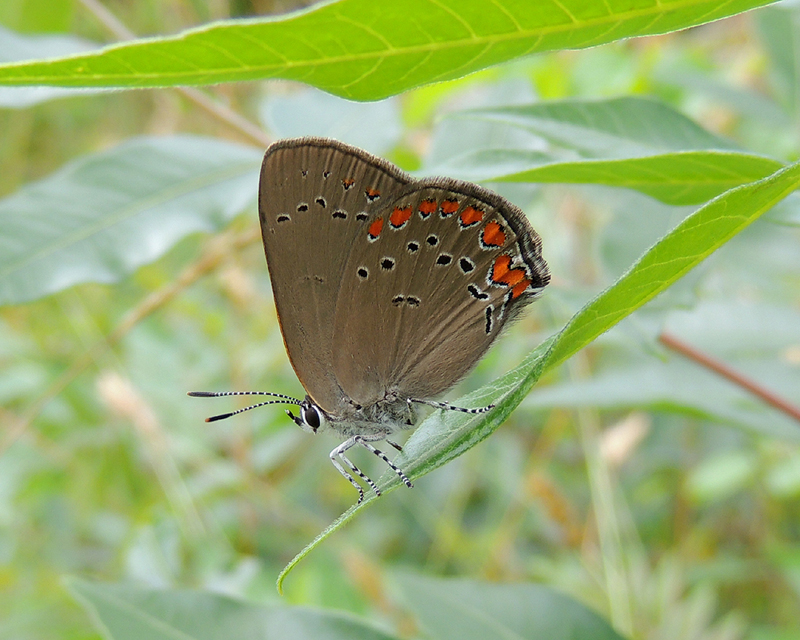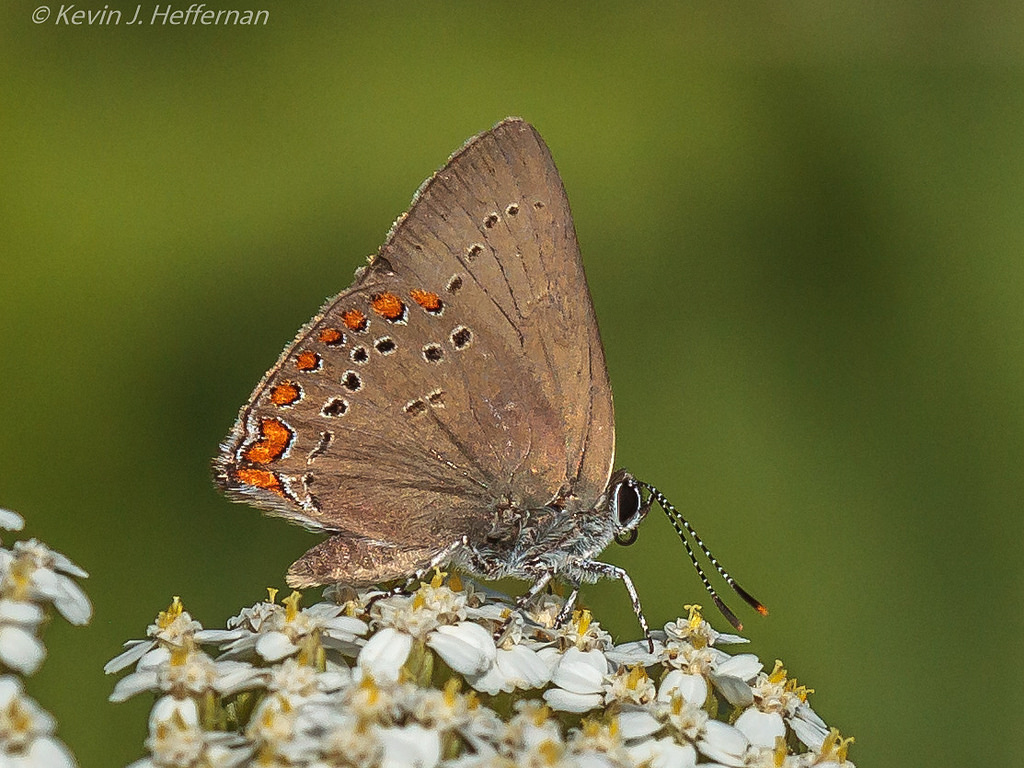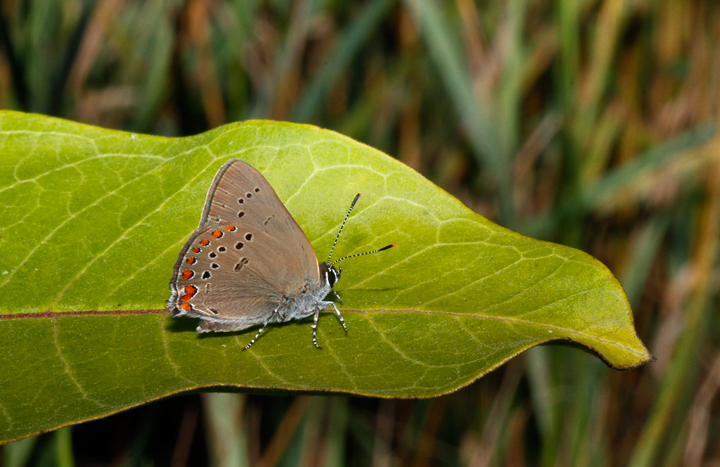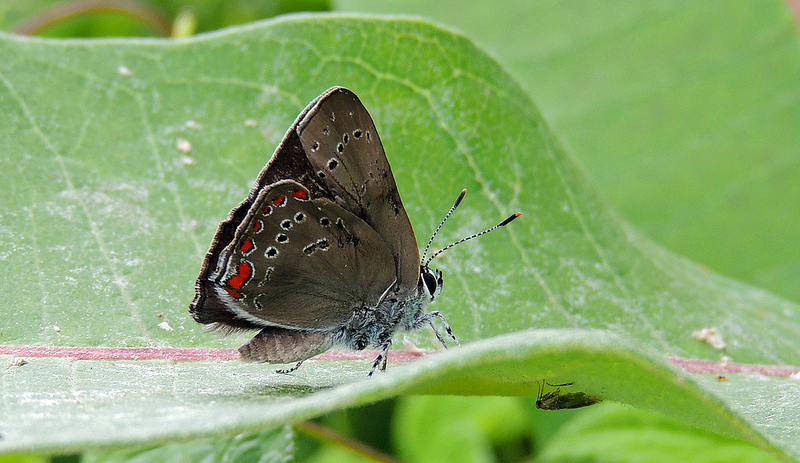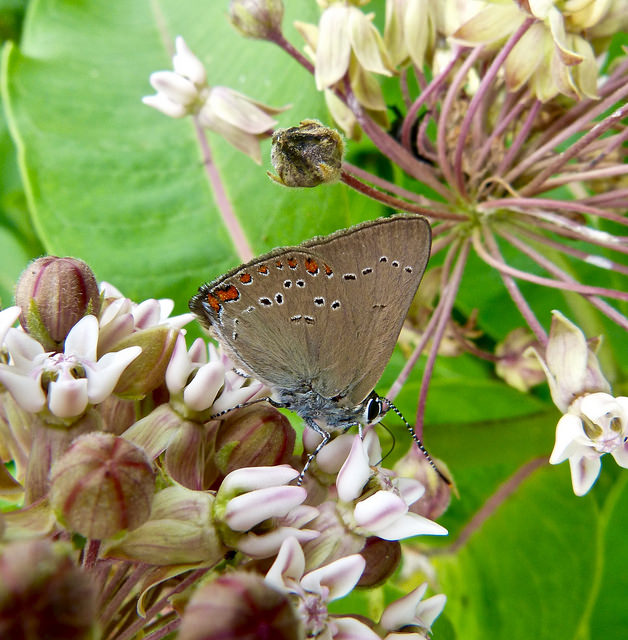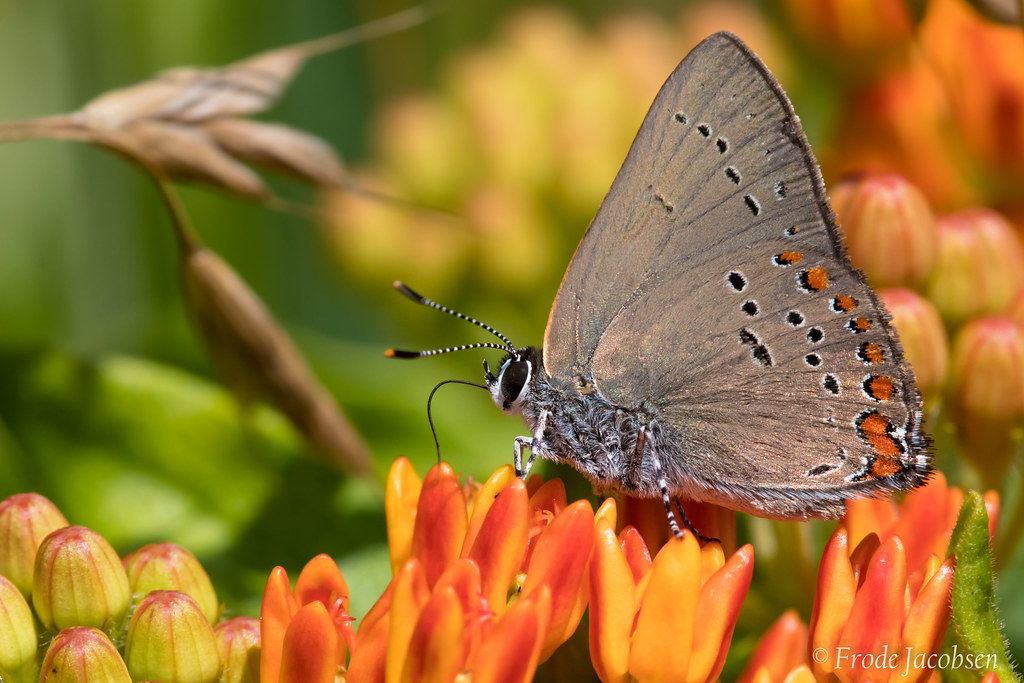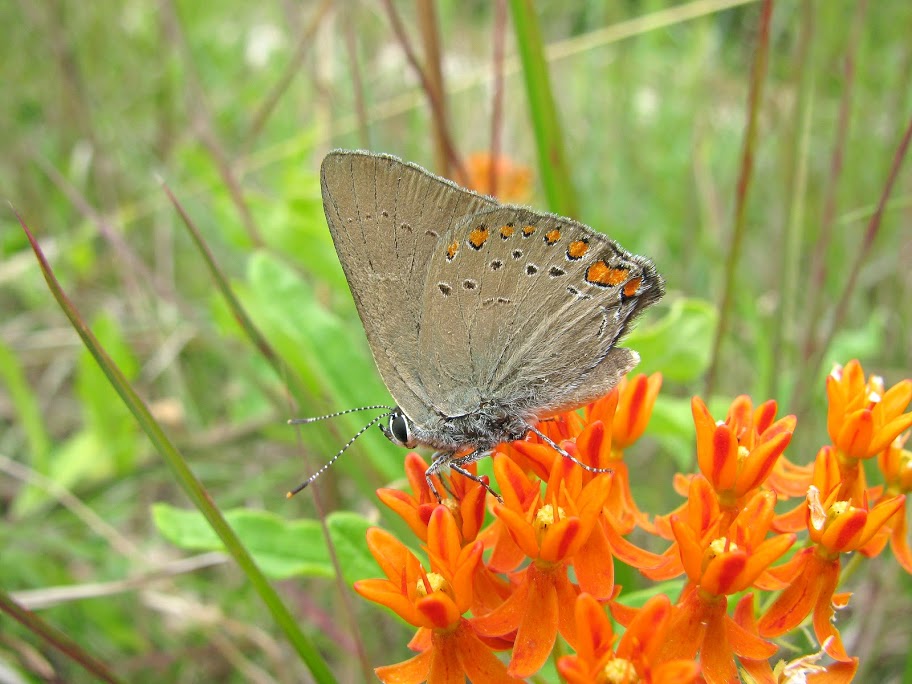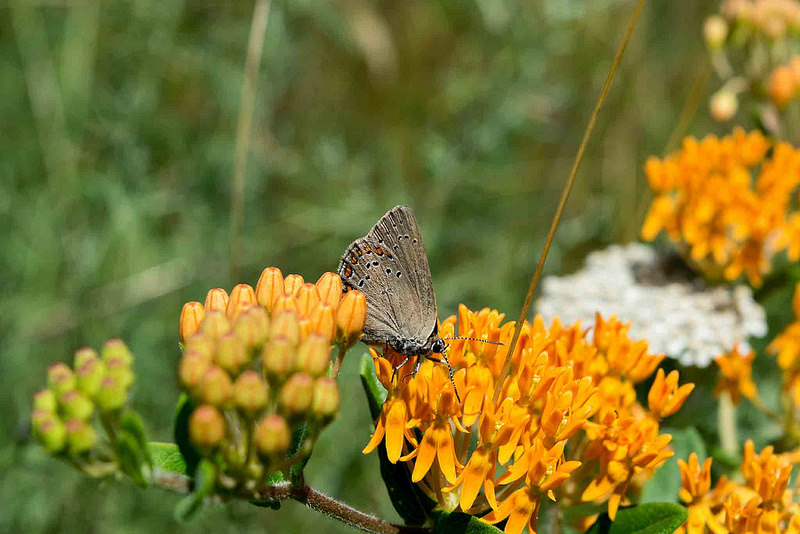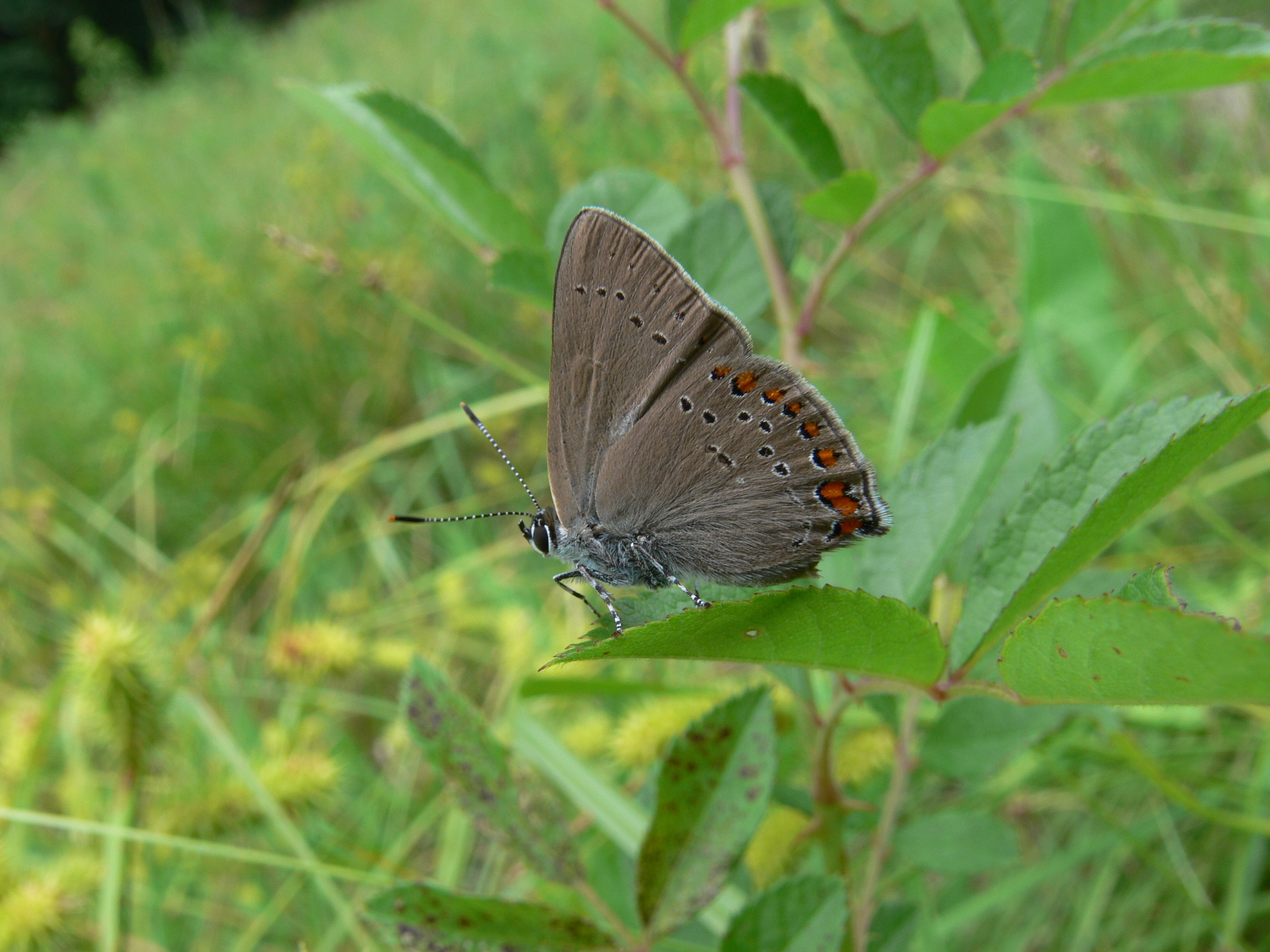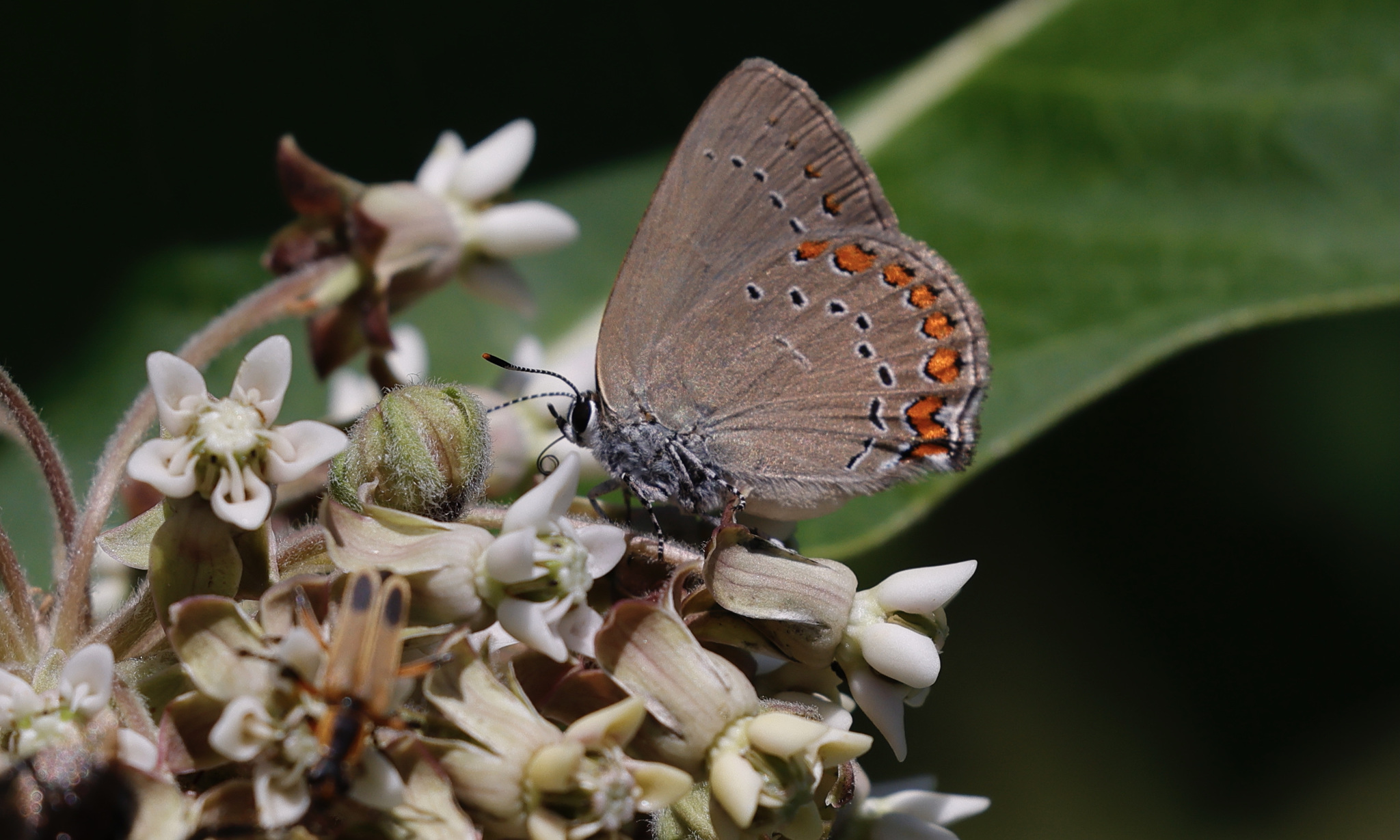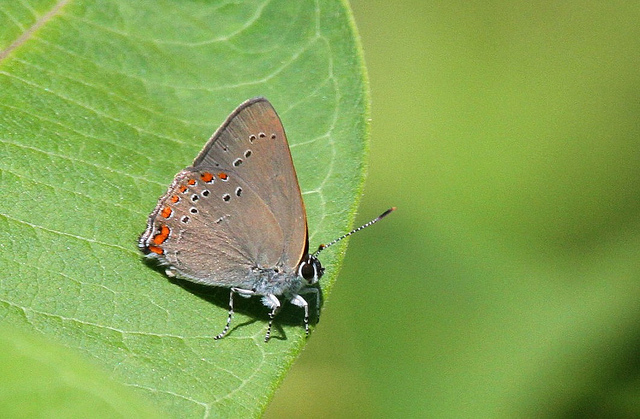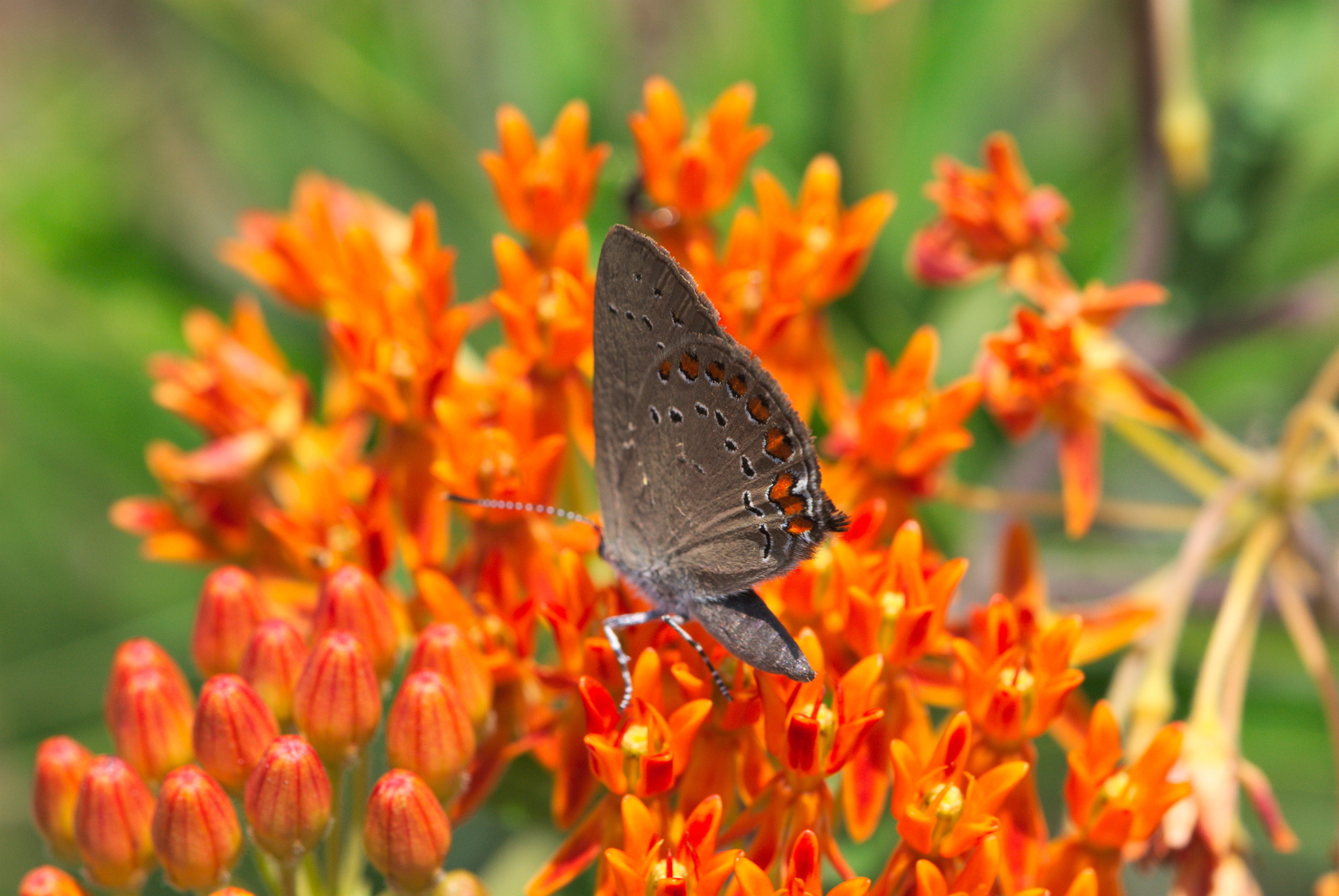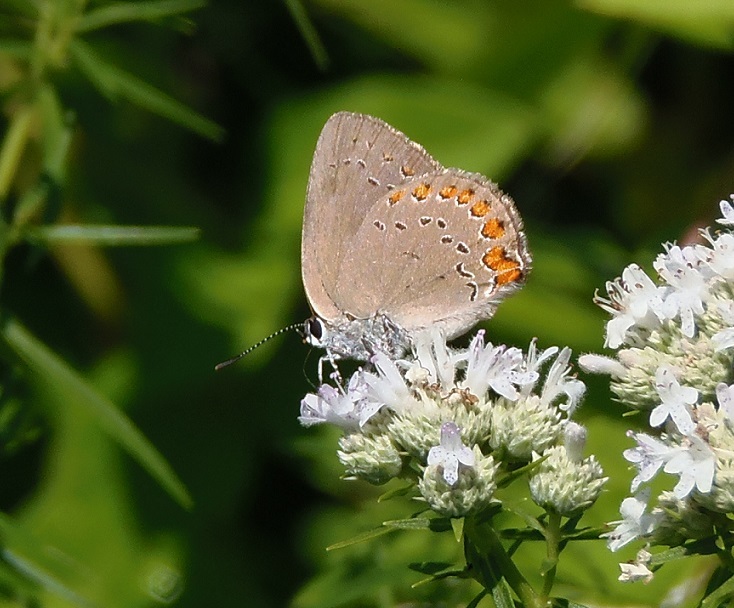Map Snapshot





















102 Records
Status
Coral Hairstreak (Satyrium titus) is an attractive, and generally uncommon butterfly that flies in the early to mid summer across Maryland (Butterflies of Maryland: A Biological Summary and Checklist by Lynn Davidson & Richard Smith).
Description
This species lacks tails on the hindwings that many hairstreaks show, and also does not have a conspicuous blue hindwing spot. It has a prominent submarginal row of orange spots on the hindwing, and more faintly on the forewing (Brock & Kaufman, 2003).
Where To Find
Search for Coral Hairstreaks in successional habitat with lots of blooming Common Milkweed and/or Butterfly Weed which the adults seem to favor as a nectar source.
Relationships
Host plants include trees and shrubs in the Rosaceae Family especially Black Cherry (Prunus serotina). Other plants that are known to have hosted Coral Hairstreaks include American Plum (Prunus americana), Chickasaw Plum (Prunus angustifolia), Chokecherry (Prunus virginiana), European Plum (Prunus domestica), and Black Chokeberry (Aronia melanocarpa) (Butterflies of Massachusetts).
Seasonality Snapshot
Source: Wikipedia
| Coral hairstreak | |
|---|---|

| |
| Nectaring on butterfly weed | |
| Scientific classification | |
| Domain: | Eukaryota |
| Kingdom: | Animalia |
| Phylum: | Arthropoda |
| Class: | Insecta |
| Order: | Lepidoptera |
| Family: | Lycaenidae |
| Genus: | Satyrium |
| Species: | S. titus
|
| Binomial name | |
| Satyrium titus (Fabricius, 1793)
| |

| |
Satyrium titus, the coral hairstreak, is a North American butterfly in the family Lycaenidae.
Description
[edit]This tailless hairstreak is brownish gray on the upper side of the wings. The underside of the hindwing has a distinct row of red-orange spots along the outer margin, but lacks the blue spot found in most hairstreaks.
Habitat
[edit]This butterfly favors brushy places, thickets, overgrown fields, open woodlands, and streamsides.
Nectar plants
[edit]The coral hairstreak is frequently seen visiting butterfly weed, but also uses New Jersey tea, dogbane and sulphur flower as nectar plants.
Host plants
[edit]Caterpillars have often been reported on feeding on the fruits of wild plums and cherries (Prunus), and have also been observed on serviceberry (Amelanchier alnifolia) and oaks (Quercus).[2]
References
[edit]- ^ "NatureServe Explorer 2.0 Satyrium titus Coral Hairstreak". explorer.natureserve.org. Retrieved 27 September 2020.
- ^ Layberry, Ross; Hall, Peter; Lafontaine, Peter (2010). "Coral Hairstreak". Butterflies of Canada. Retrieved 9 March 2013.
- Jim P. Brock, Kenn Kaufman (2003). Butterflies of North America. Boston: Houghton Mifflin. ISBN 0-618-15312-8.
External links
[edit]- S. titus photos, BugGuide
- S. titus photos, Cirrus Image
- S. titus info, ODNR Division of Wildlife
- Satyrium titus Wisconsin Butterflies
